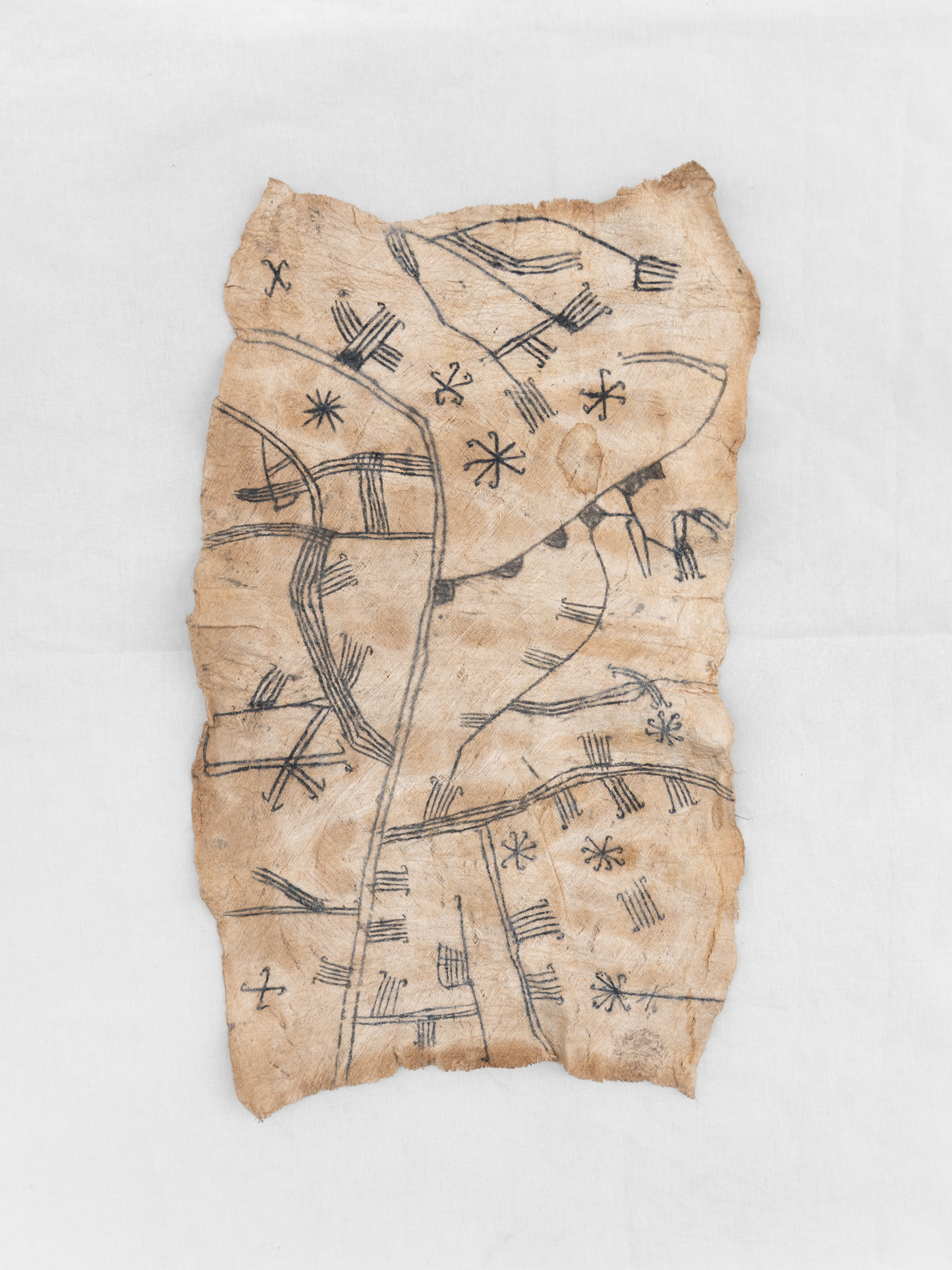
Bark-cloth Painting, Mbuti People, Ituri Rainforest
€300.00€240.00
A bark-cloth painted with a mixture of charcoal and fruit juices by an anonymous Mbuti artist.
76 x 44 cm
Ituri rainforest, Democratic Republic of the Congo.
Mid-20th century.
For the Mbuti people of the Ituri forest of northeastern Democratic Republic of the Congo, a nomadic hunter-gatherer society, the forest is sacred. It is the source of their existence – their god, parent and sanctuary. The Mbuti are bamiki bandura, “children of the forest”, enveloped from birth in a rich symbolic tradition that stresses the supreme value of ndura, or “forestness”. Mbuti speak and sing reverently and lightheartedly about, and to, the forest. They sing “leaf-carrying” and “honey-bee” songs. The most valued are songs without words, sung to awaken the forest and make it rejoice through the beauty of the sound alone. Dances performed for ritual purposes or for pure enjoyment include the mimetic “elephant hunt” and “honey-bee” dances, enacted to attract, and give thanks for, game and food.
The Mbuti use painted barkcloths, prepared by men and painted by women, as ritual dress for festivals, celebrations and rites of passage, including wedding and funeral ceremonies and puberty initiations. Both the painted barkcloth that wraps an Mbuti infant at birth, and the barkcloth tunnel through which young boys are “reborn” during puberty rites, are conceived, like the forest, as a womb (ndu).
Men prepare the barkcloth from the inner bark of about six different species of trees. It is pounded with an ivory or wood mallet which may be incised with cross-hatch or linear grooves to produce a subtle textured surface. The process yields a supple fibrous canvas of various natural shades of white, tan or reddish brown. Mud immersions produce deep red and black grounds.
Women prepare the dyes and paints from a variety of roots, fruits and leaves which they collect from the forest. The paint is applied with twigs, twine or fingers. The elaborate process of preparing and painting a barkcloth is a social activity, and Mbuti learn how to make barkcloth from an early age.
The Mbuti barkcloth paintings conceptualise their world; they are abstract expressions of the moods and features of the forest. The artists transform signs of the visible (the fractal geometry of trees) and the invisible (folded leaves, subtle modulations of insect sounds) into a unique visual language. The paintings are evidence of the Mbuti perception of the forest as the spiritual and symbolic core of their culture. The artists combine a variety of biomorphic motifs (e.g. butterflies, birds, leopard spots) with geometric patterns that give an impression of motion, sound and shape within the forest landscape: light filtered through trees, buzzing insects, ant trails, tangled vines. Cross-hatched squares, perhaps representing the texture of reptilian skin, are shorthand for turtles, crocodiles or snakes.
Visual “silences” or voids in the patterns are especially valued, consistent with Mbuti concepts of sound and silence. Silence in Mbuti thought does not imply lack of sound – for the forest is always “talking” – but quiet (ekimi), the absence of noise. Noise (akami) is conflict. Sound has spiritual and magical properties. It is integral to the Mbuti world, not only as an acoustic backdrop, but as a means of heightened communication with other people and with the forest itself.
Source: Adapted from V. Drake Moraga. 1996. An eternity of forest – paintings by Mbuti women.
The Bambuti have been targets of a genocide campaign known as 'Effacer le tableau'.
The primary objective of 'Effacer le tableau' was the territorial conquest of the North Kivu province of the DRC and ethnic cleansing of Pygmies from the Congo's eastern region. The Bambuti were targeted specifically as the rebels considered them "subhuman", and it was believed by the rebels that the flesh of the Bambuti held "magical powers".
Senior officers justified these beliefs with bible passages (such as Deuteronomy 20:13–20:17).
There were also reports of cannibalism being widespread.
It is estimated 60,000 to 70,000 Pygmy were killed in the campaign, and over 100,000 more were displaced.
Investigations found that beyond the effaceurs, attacks on and the killing of the Bambuti became common among all forces during the Second Congo War.
